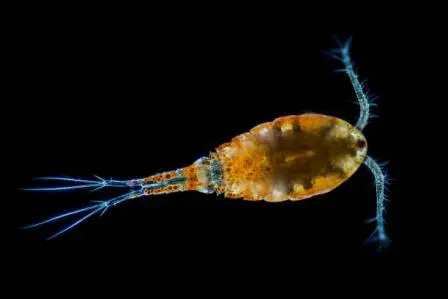Water, a fundamental element for all life on Earth, is a source of sustenance and vitality. Often, when we think of water, images of pristine lakes, flowing rivers, or the vast oceans come to mind. However, in our daily lives, water also plays a role in our immediate environment—most notably, in the form of drinking water. Beyond the crystal-clear appearance, there exists a microscopic world teeming with diverse life forms. In this article, we will delve into the fascinating realm of water animals found in drinking water, uncovering the unseen inhabitants that coexist with us in this essential resource.
- Rotifers: The Wheel-Bearers of Microcosms: Microscopic yet resilient, rotifers are tiny aquatic animals that can be found in drinking water sources. Their name, derived from the Latin words “rota” (wheel) and “fera” (bearer), reflects the wheel-like structure that some species use for locomotion and feeding. Despite their minuscule size, rotifers are crucial players in aquatic ecosystems, contributing to nutrient cycling and serving as a food source for other organisms.
- Copepods: The Water Fleas: Copepods, often referred to as water fleas, are another group of small crustaceans commonly present in drinking water. These tiny creatures play a vital role in maintaining water quality by feeding on algae and bacteria. Some species of copepods are even used in laboratories for toxicity testing, underscoring their sensitivity to environmental changes.
- Amoebas: Shape-Changing Protists: Amoebas, belonging to the group of single-celled protists, are versatile microorganisms that can be found in various water sources, including drinking water. Their distinctive feature lies in their ability to change shape, allowing them to move and engulf food particles. While most amoebas are harmless, some species can pose health risks, emphasizing the importance of water treatment processes.
- Water Bears (Tardigrades): Microscopic Survivors: Tardigrades, often affectionately known as water bears, are remarkable micro-animals with incredible resilience. These microscopic creatures can withstand extreme conditions, including desiccation, radiation, and even the vacuum of space. Although relatively rare in drinking water, their ability to endure harsh environments showcases the tenacity of life in the microcosmic world.
- Daphnia: The Water Flea with Transparency: Daphnia, commonly known as water fleas, are small crustaceans that inhabit freshwater environments, including our drinking water sources. Notable for their transparency, these creatures are often used in scientific research to study the impacts of environmental factors on aquatic ecosystems. Daphnia also serve as a crucial link in the food chain, being consumed by various fish species.
- Giardia: A Protozoan Menace: Giardia, a genus of flagellated protozoans, represents a potential threat in drinking water. These microscopic parasites can cause gastrointestinal infections in humans and animals if water treatment processes are inadequate. The resilience of Giardia cysts makes them challenging to eliminate, underscoring the importance of rigorous water purification measures.
- Cryptosporidium: Microscopic Intruders: Cryptosporidium, another microscopic parasite, can be found in drinking water sources and poses a risk to human health. This protozoan can cause cryptosporidiosis, a diarrheal disease that can be particularly severe in immunocompromised individuals. The resistance of Cryptosporidium oocysts to traditional disinfection methods necessitates advanced water treatment techniques.
- Hydra: Tiny Predators in the Water World: Hydra, small but voracious freshwater organisms, are equipped with tentacles that contain specialized stinging cells. Although less common in drinking water, hydra feed on tiny aquatic organisms and contribute to the intricate balance of microfauna in aquatic ecosystems. Their regenerative abilities make them intriguing subjects for biological research.
- Planarians: Aquatic Flatworms with Regenerative Powers: Planarians, aquatic flatworms with a distinctive triangular head, are occasionally found in drinking water. These fascinating creatures possess remarkable regenerative capabilities, allowing them to regenerate complete organisms from small body fragments. While generally harmless, their presence emphasizes the need for effective water treatment and filtration.
- Aquatic Worms: Soil Dwellers in Water Sources: Various species of aquatic worms, including oligochaetes and nematodes, can inhabit drinking water sources. These worms play a role in nutrient cycling and sediment dynamics within aquatic ecosystems. While most are harmless, certain types of nematodes may parasitize plants or animals, highlighting the complexity of the microcosmic life present in water.
Conclusion:
The microscopic world of water animals in drinking water unveils a diverse array of organisms, each playing a unique role in the delicate balance of aquatic ecosystems. While the majority of these microorganisms are harmless, some pose potential risks to human health, emphasizing the importance of robust water treatment processes. Understanding and appreciating this hidden biodiversity not only enriches our knowledge of the natural world but also underscores the significance of preserving and protecting our water resources. As we raise a glass of seemingly clear water, let us acknowledge the intricate tapestry of life that coexists with us in every sip.
MORE POSTS: How long can a saltwater fish live in freshwater?
Ankurman Handique
Latest posts by Ankurman Handique (see all)
- How to Reach Kaziranga National Park: A Complete Guide - June 29, 2024
- What animals are found in Puerto Rico? - February 23, 2024
- What does coyote poop look like? - February 20, 2024

